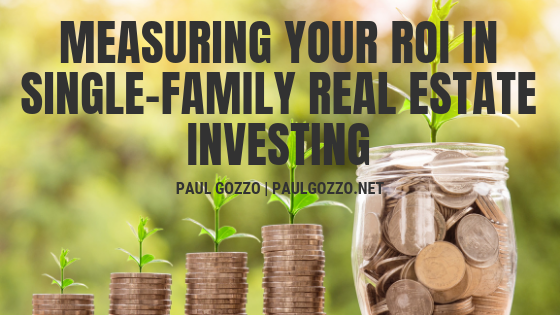Investing in single-family real estate is similar to any other type of asset-backed investment. However, it is perhaps one of the most challenging components of purchasing real estate investment property because a home has more components that can cause potential issues when compared to other rental Real Estate asset classes. And, as with all leveraged investments, investors are not guaranteed their purchase will be profitable in the long run because disruption to cash flow can cause problems with the overall investment strategy. With that being said, there are several important steps individuals can take before investing in single-family residential rental real estate that can ease their mind, minimize risk, while predictably measuring ROI.
Identify Goals
One of the first steps an investor should take is to identify their goals. A ROI (return on investment) can mean several different things depending on who you ask and even how one calculates ROI can vary so it is crucial to identify your goals prior to investing in single-family rentals as a real estate strategy.
Why are you investing?
What is most important to you?
What do you want to achieve? Short term, long term.
These are all broad questions investors should contemplate prior to getting started. For many, cash flow and appreciation make the top of the list as what they would like to achieve in investing. However, while both are obviously desirable, it is important to think about what you might want to do with that free cash flow like does it make sense to reinvent it into paying down debt so you increase cash flow faster and pay back debt sooner, or does it maybe make sense of first use free cash flow to build a bank for tenant turns, vacancy and mechanical issues that may come up from time to time?
Cash Flow and Cash on Cash Return
Put simply, cash flow refers to the amount of money, or profit, an investor receives after operating expenses. When you subtract all operating expenses (mortgage, taxes, insurance, management, etc.) from the gross rental income, you are left with cash flow. Check out the property ROI calculator from Roofstock to get a better idea about your potential return.
Cash on cash return uses a formula of net cash flow / cash invested to better predict your overall return on investments. It can be a great tool to measure how a property will perform and can help investors better identify property worth their investments, financing options, and expected expenses.
Appreciation
Appreciation occurs in real estate when a property increases in value over time. Specifically for the single-family residential asset class you may see this reported as, “HPA,” which stands for Home Price Appreciation. There are several factors that could contribute to property value with population and job growth being two prime examples. Additional influencing factors are endless with other common contributing factors including infrastructure development and lifestyle amenities such as shopping centers, gyms, community centers, etc. Also, an increase in occupancy rates can add to appreciation just like random trends in demographics. Similarly, negative trends and random uncontrollable acts can hurt appreciation such as a new sporting complex coming to an area or conversely, a professional sports team changing its home location.
In the end, the best way to positively affect ROI is through experience. It will take time and practice, but like a lot of things in life, the more you put in the more you generally get out. So, if you have an interest in rental real estate investing and an aptitude to learn, you will have a greater chance of success. I hope you take your time and think of your long goal and then work backwards to chip away at achieving knowledge and confidence. It will not happen overnight but if you are diligent and persistent, you most certainly will have some degree of success in this asset-backed investment strategy and you will probably have a lot of success over time, but that is mostly up to you!

